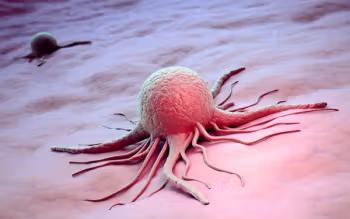
In-Depth Analysis of Amgen Cholesterol Drug Favored by FDA Panel
FDA officials have recommended approval for Amgen's proposed cholesterol-lowering medication, evolocumab (Repatha).
FDA officials have recommended approval for Amgen’s proposed cholesterol-lowering medication, evolocumab (Repatha).
While the drug has not yet secured the FDA’s approval, it is
Proposed indications for evolocumab include:
- Use in adults with primary hyperlipidemia—including heterozygous familial and nonfamilial hyperlipidemia, as well as mixed dyslipidemia—as an adjunct to dietary interventions for reducing low-density lipoprotein cholesterol (LDL-C) levels, total cholesterol levels, apolipoprotein B, and other unfavorable lipid parameters, as well as to increase levels of the salutary biomarker high-density lipoprotein cholesterol (HDL-C)
- Use in combination with statins and nonstatin lipid-lowering therapies, such as ezetimibe
- Use in statin-intolerant patients
Current FDA-approved treatments for primary or mixed dyslipidemias include atorvastatin, simvastatin, pitavastatin, lovastatin, fluvastatin, pravastatin, extended-release niacin, fenofibrate, rosuvastatin, atorvastatin/ezetimibe, and simvastatin/ezetimibe. For patients with homozygous familial hypercholesterolemia (HoFH), oral lomitapide and injectable mipomersen are also available for reduction of non-HDL-C levels.
Mechanism of action
The circulating protein proprotein convertase subtilisin/kexin type 9 (PCSK9) was initially considered a drug target due to literature reports of mutant individuals with low PCSK9 activity having unusually robust cardiovascular health. For instance, African Americans with a nonsense allele encoding PCSK9 had, on average, 29% lower LDL-C levels, and an aggregate 88% lower risk of developing coronary heart disease.
One woman in her early 20s had a complete loss-of-function mutation for PCSK9 and an LDL-C level of 15.5 mg/dL and HDL-C level of 54 mg/dL. Another woman in her early 30s had a heterozygous loss-of-function mutation for PCSK9 and an LDL-C level of 14 mg/dL and HDL-C level of 65 mg/dL.
Mechanistically, the human monoclonal immunoglobulin G2 (IgG2) antibody evolocumab binds to the circulating PCSK9 protein, inhibiting it from binding to low-density lipoprotein receptors (LDLRs) on the surface of hepatocytes.
These LDLRs serve to clear LDL-C from the blood. By inhibiting PCSK9 activity, medications like evolocumab increase LDLR levels on the surface of liver cells, increasing the intensity of LDLR-mediated LDL-C clearance.
Dosing
Proposed dosing for evolocumab is 140 mg administered subcutaneously every 2 weeks, or 420 mg administered subcutaneously each month. Potential concerns with the monthly dosing option include a more limited opportunity for dosage titration in patients achieving very low LDL-C levels.
Pharmacology and pharmacokinetics
The FDA’s briefing document suggest that no dosage adjustments will be necessary in geriatric patients or those with mild-to-moderate renal or hepatic impairment.
Important pharmacokinetic considerations include a 20% increase in evolocumab clearance rates when it is coadministered with statins, an estimated half-life of 11 to 17 days, and 2- to 3-fold accumulation with repeat dosing. The medication has limited tissue distribution, and a volume of distribution averaging 3.3 L. Maximum levels are achieved within 3 to 4 days, and bioavailability has been estimated at 72% following a single dose of evolocumab.
In efficacy studies, evolocumab-binding antibodies have formed in <1% of patients using the drug, but there have been no cases of neutralizing antibodies to evolocumab.
Clinical studies
Clinical data are based on 5 short-term phase 2 studies, 1 long-term phase 2 trial, 4 short-term phase 3 trials, and 2 long-term phase 3 trials.
General efficacy statements noted in the FDA’s briefing document concerning the drug include:
- LDL-C reduction of 55% to 75% within 1 week of starting therapy in patients with primary hyperlipidemia, and a maximal response within 2 weeks of therapy.
- LDL-C reduction of 31% within 12 weeks in patients with HoFH not receiving lipid apheresis.
- A lower rate of treatment response in HoFH patients receiving lipid apheresis versus patients not receiving lipid apheresis over 24 weeks of evolocumab therapy (response rates of 20% with apheresis vs 25% without apheresis, respectively).
- A 6% greater reduction in LDL-C among HoFH patients receiving an intensified dosing regimen of 420 mg every 2 weeks versus the usual dosage of 420 mg monthly.
Warnings and precautions
In evolocumab trials, nonfatal serious adverse events occurred in 3% of patients receiving active treatment versus 2.4% of patients receiving placebo alone. These events included myocardial infarction, angina pectoris, and pneumonia, each of which occurred in 0.1% of patients receiving evolocumab.
Pancreatitis, appendicitis, pneumonia and back pain were also reported. Cardiac disorders, increases in creatinine phosphokinase levels, and nausea were the most common serious adverse events leading to treatment discontinuation.
In evolocumab monotherapy trials, the most common adverse events of any severity were nasopharyngitis (5.9%), upper respiratory tract infection (3.2%), back pain (3.0%), and nausea (2.1%), each of which occurred in evolocumab patients at a modestly higher rate than those taking placebo.
When taken with standard-of-care treatments, evolocumab was associated with slightly higher rates of arthralgia (3.4%), back pain (3.1%), myalgia (2.5%), and extremity pain (2.5%) versus patients receiving only standard-of-care medications. Monthly evolocumab dosing increased the risk of nasopharyngitis, headache, and fatigue versus every-2-week dosing.
In early trials, neurocognitive adverse events occurred in 11 patients, including 6 in control groups. In trials lasting up to 1 year, a total of 22 neurocognitive adverse events were recorded. These adverse events were not related to the degree of LDL-C reduction achieved.
In clinical trials, 0.1% of patients taking evolocumab developed renal disease or proteinuria, while no such cases were identified in control groups. These renal events may be more likely to occur in statin-intolerant patients and diabetics. In addition, a possible safety signal related to pancreatitis risk was detected.
Injection site reactions were reported at rates of 3.3% to 5.7%, varying by trial duration and design. A total of 5 cases of angioedema have been reported, all of which occurred in patients using evolocumab.
Drug-drug interactions
Studies of drug-drug or drug-food interactions have not been conducted with evolocumab. Due to the drug’s properties, no such interactions are expected. However, a 20% increase in the clearance of statins is a notable finding from pharmacokinetic studies.
Genotoxicity and teratogenicity
Genotoxicity assays were not performed, as a DNA interaction with evolocumab was not expected, based on the drug’s mechanism of action. To assuage lingering carcinogenicity concerns, the manufacturer conducted a 2-year study in hamsters. No drug-related tumors were identified.
Animal studies in hamsters and monkeys showed no relationship between evolocumab exposure and fetal variations or malformations, even at supratherapeutic doses. A total of 7 women became pregnant in all evolocumab research programs, and a total of 9 men fathered children. Among these 16 pregnancies, 1 of the 7 in the maternal exposure group and 3 of the 9 in the paternal exposure group resulted in a full-term birth without complications.
Conclusions
With the favorable FDA panel opinion of evolocumab, Amgen is optimistic about the drug’s outlook.
“If approved, Repatha would provide patients and physicians with an important new treatment option for managing high cholesterol,” stated Sean E. Harper, MD, executive vice president of research and development for Amgen.
The FDA is expected to act on Repatha’s biologics license application on August 27, 2015.
References
1. Caffrey MK. American Journal of Managed Care. FDA Panel Gives Evolocumab Green Light, With Advice on Who Gets It to Follow. http://www.ajmc.com/newsroom/fda-panel-gives-evolocumab-green-light-with-advice-on-who-gets-it-to-follow. Accessed June 2015.
2. FDA. FDA Briefing Document: June 10, 2015. http://www.fda.gov/downloads/AdvisoryCommittees/CommitteesMeetingMaterials/Drugs/EndocrinologicandMetabolicDrugsAdvisoryCommittee/UCM450072.pdf. Accessed June 2015.
3. Amgen. Amgen To Discuss Details Of Repatha™ (Evolocumab) Biologics License Application For The Treatment Of High Cholesterol [press release]. http://www.amgen.com/media/media_pr_detail.jsp?releaseID=2058073. Accessed June 2015.
Newsletter
Stay informed on drug updates, treatment guidelines, and pharmacy practice trends—subscribe to Pharmacy Times for weekly clinical insights.























































































































































































































